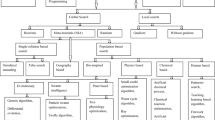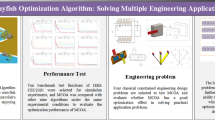Abstract
The running curve optimization of Automatic Train Operation system usually takes into account running time, energy consumption and passenger comfort. In this paper, in order to provide more comprehensive optimization and accurate reference of running curve for Automatic Train Operation system, we adopted the multi-objective optimization strategy of genetic algorithm to optimize from five aspects: speeding (safety), parking accuracy, punctuality, energy consumption and comfort. In order to increase the convergence speed of genetic algorithm to the optimal solutions, we propose a modified genetic algorithm, which the penalty function method is added into the fitness objective function. The modified genetic algorithm optimization program is written by M language in MATLAB, and combined with a graphical user interface tool to design the optimization system. Its validity is verified by comparison between the tests based on three different interstation of Shanghai Metro Line 11. The results show that it is effective and practicability to use the designed system to optimize the running curve of Automatic Train Operation system.

















Similar content being viewed by others
References
Dong, H.R., Ning, B., Gai, B.G., Hou, Z.S.: Automatic train control system development and simulation for high-speed railways. IEEE Circuits Syst. Mag. 10(2), 6–18 (2010)
Zheng, W., Xu, H.Z.: Modeling and safety analysis of maglev train over-speed protection based on stochastic petri nets. J. China Railway Soc. 31(4), 59–64 (2009)
Olsson, N.O.E., Haugland, H.: Influencing factors on train punctuality-results from some Norwegian studies. Transp. Policy. 11(4), 387–397 (2004)
Chen, D., Tang, T., Gao, C., Mu, R.: Research on the error estimation models and online learning algorithm for Train Station parking in urban rail transit. China Railway Sci. 31(6), 122–127 (2010) (in Chinese)
Miyatake, M., Ko, H.: Optimization of train speed profile for minimum energy consumption. IEEJ Trans. Electr. Electron. Eng. 5(3), 263–269 (2010)
Karakasis, K., Skarlatos, D., Zakinthinos, T.: A factorial analysis for the determination of an optimal train speed with a desired ride comfort. Appl. Acoust. 66(10), 1121–1134 (2005)
Chang, C.S., Du, D.: Improved optimization method using genetic algorithm for mass transit signalling block-layout design. IEE Proc. - Electric Appl. 145(3), 266–272 (1998)
Ho, T.K., Yeung, T.H.: Railway junction conflict resolution by genetic algorithm. Electron. Lett. 36(8), 771–772 (2000)
Wang, K.K., Ho, T.K.: Dynamic coast control of train movement with genetic algorithm. Int. J. Syst. Sci. 35(13–14), 835–846 (2004)
Domínguez, M., Fernández-Cardador, A., Cucala, A.P., Gonsalves, T., Fernández, A.: Muti objective particle swarm optimization algorithm for the design of efficient ATO speed profiles in metro lines. Eng. Appl. Artif. Intell. 29(3), 43–53 (2014)
Su, S., Tang, T., Li, X., Gao, Z.Y.: Optimization of multitrain operations in a Subway system. IEEE Trans. Intell. Transport. Syst. 15(2), 673–683 (2014)
Ac¿kbas, S., Soylemez, M.T.: Coasting point optimization for mass rail transit lines using artificial neural networks and genetic algorithms. IET Electr. Power Appl. 2(3), 172–182 (2008)
Yang, X., Ning, B., Tang, T.: A two-objective timetable optimization model in Subway Systems. IEEE Trans. Intell. Transp. Syst. 15(5), 1913–1921 (2014)
Yin, J., Chen, D., Tang, T., Zhu, L., Zhu, W.: Balise arrangement optimization for train station parking via expert knowledge and genetic algorithm. Appl. Math. Model. 40(19–20), 8513–8529 (2016)
Chang, C.S., Sim, S.S.: Optimising train movements through coast control using genetic algorithms. IEE Proc. - Electric Power Appl. 144(1), 65–73 (1997)
Li, J.Q.: Analysis of the Train’s traction energy consumption of shanghai metro line 11. Mechatronics. 19(6), 32–35 (2013) (in Chinese)
Holland, J.: Adaptation in Natural and Artificial Systems, University of Michigan Press, p. 1975. USA, Ann Arbor, MI (1975)
Arora, R.K.: Optimization Algorithm and Applications, p. 2015. CRC Press, Hoboken, NJ (2015)
Taboaada, H.A., Espiritu, J.F., Coit, D.W.: MOMS-GA: a multi-objective multi-state genetic algorithm for system reliability optimization design problems. IEEE Trans. Reliab. 57(1), 182–191 (2008)
Kuri-Morales, A.F., Gutiérrez-García, J.: Penalty Function Methods for Constrained Optimization with Genetic Algorithms: A Statistical Analysis. In: Coello Coello, C.A., de Albornoz, A., Sucar, L.E., Battistutti, O.C. (eds.) MICAI 2002: Advances in Artificial Intelligence. MICAI 2002. Lecture Notes in Computer Science, vol 2313. Springer, Berlin (2002)
Y. J. Lei, S. W. Zhang (2014) MATLAB genetic algorithm toolbox and its application. Xidian University Press, 2014 (in Chinese)
Kumar, R.: Blending Roulette Wheel Selectin & Rank Selection in genetic algorithms. Int. J. Machine Learn. Comput. 2(4), 365–370 (2012)
Syswerda, G.: Simulated crossover in genetic algorithm. Found. Genet. Algorithms. 2, 239–255 (1993)
Kaya, M.: The effects of two new crossover operators on genetic algorithm performance. Appl. Soft Comput. 11(1), 881–890 (2011)
Chen, Y., Qian, C.Y., Xi, X.D.: Traction energy consumption test and analysis for shanghai metro AC 16 electromotive train. Urban Mass Transit. 19(9), 34–38 (2016) (in Chinese)
Xu, K., Wu, L., Yang, F.F.: Automatic train operation system in urban rail transit based on PSO-ICS algorithm optimization. J. Railway Sci. Eng. 14(12), 2704–2711 (2017) (in Chinese)
Acknowledgements
This work is supported by the National “Twelfth Five-Year” Pillar program for Science & Technology – the Interoperability Comprehensive Evaluation Integrative Platform and Demonstration for Urban Rail Transit (No.2015BAG19B02).
Author information
Authors and Affiliations
Corresponding author
Rights and permissions
About this article
Cite this article
Liang, Y., Liu, H., Qian, C. et al. A Modified Genetic Algorithm for Multi-Objective Optimization on Running Curve of Automatic Train Operation System Using Penalty Function Method. Int. J. ITS Res. 17, 74–87 (2019). https://doi.org/10.1007/s13177-018-0158-6
Received:
Revised:
Accepted:
Published:
Issue Date:
DOI: https://doi.org/10.1007/s13177-018-0158-6




